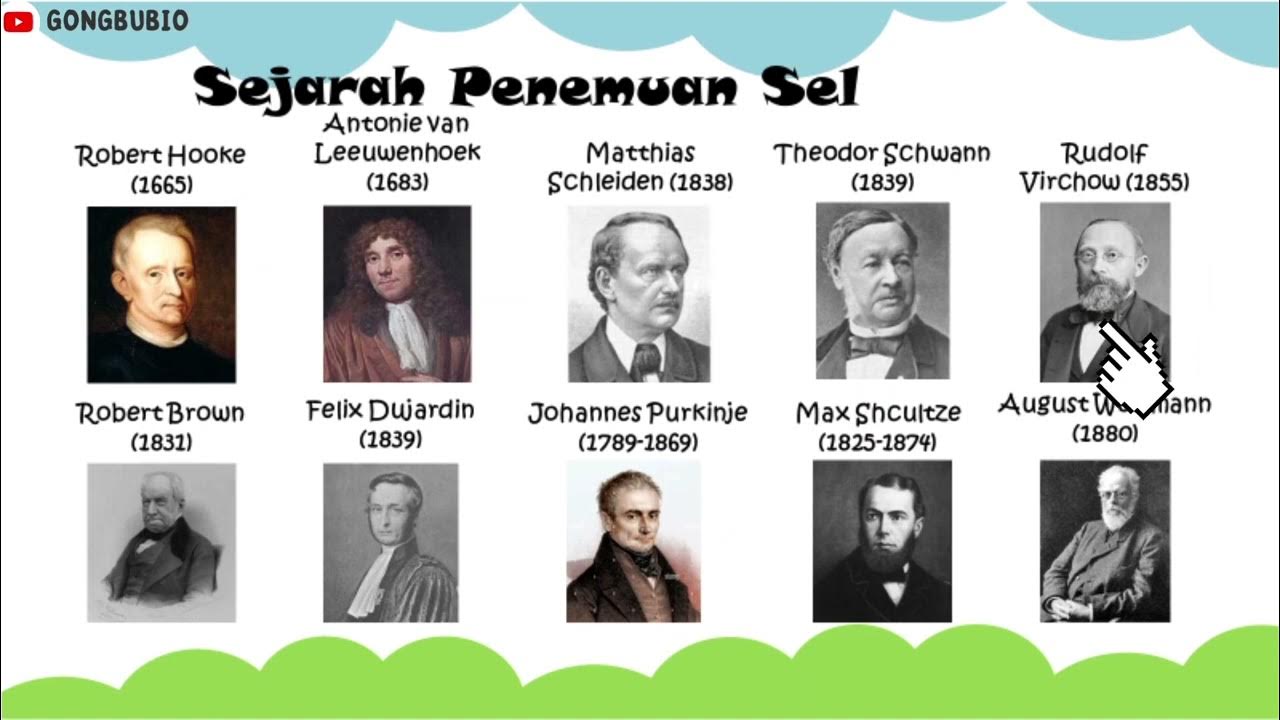Cell Theory Timeline | Biology
Summary
TLDRThis educational video explores the history of cell theory, a cornerstone of biology. It begins with the invention of the microscope by Galileo in 1625 and Robert Hooke's discovery of cells in 1665. The timeline highlights key discoveries, such as the observation of living organisms in pond water by Antonie van Leeuwenhoek in 1670, and the eventual establishment of cell theory by Matthias Schleiden and Theodor Schwann in 1839. They proposed that all living things are composed of cells, each with a nucleus and cytoplasm, encapsulating the fundamental unit of life.
Takeaways
- 🔬 The first microscope was invented by Galileo in 1625, marking the beginning of cellular observation.
- 🌿 In 1665, Robert Hooke discovered cells while studying the structure of cork, coining the term 'cell' for the honeycomb-like compartments.
- 🔬 In 1670, Antonie van Leeuwenhoek observed living organisms in a drop of pond water using his single lens microscope, referring to them as 'animalcules'.
- 🧬 In 1804, Rudolph discovered that cells are independent and separated by cell walls, indicating cellular individuality.
- 🌿 In 1805, Franz Bauer argued that living things are composed of cells, emphasizing the cellular basis of life.
- 🧬 In 1809, Jean-Baptiste de Lamarck described that life is not possible without cellular tissues, highlighting the necessity of cells for life.
- 🔬 In 1831, Robert Brown reported the presence of the nucleus in cells, which contradicted Hooke's idea of cells being mere spaces.
- 🧠 The cell theory, proposed in 1839 by Matthias Schleiden and Theodor Schwann, identified the cell as the fundamental unit of life, consisting of a nucleus, cytoplasm, and cell membrane.
- 🌿 Schleiden focused on the cellular structure of plant tissues, while Schwann studied animal tissues, leading to a unified understanding of cellular biology.
- 🔬 The cell theory has profound implications across all fields of biology, underpinning our understanding of life's basic unit.
- 📚 The video script provides a timeline of key discoveries and figures that contributed to the development of the cell theory.
Q & A
What is the significance of the cell theory in biology?
-The cell theory is one of the most fundamental theories in biology, with far-reaching consequences in all fields related to biology, as it provides the basis for understanding the structure and function of living organisms.
Who invented the first microscope, and in what year?
-The first microscope was invented by Galileo in 1625.
What did Robert Hooke discover in 1665, and what did he call these structures?
-In 1665, Robert Hooke discovered small, honeycomb-like compartments in a cork while studying it under his self-made microscope. He called these structures 'cells'.
Who observed living organisms in a drop of pond water for the first time, and in what year?
-In 1670, Antonie van Leeuwenhoek observed living organisms in a drop of pond water for the first time using his single lens microscope.
What did Rudolph discover about cells in 1804?
-In 1804, Rudolph proved that cells are independent and separated from other cells by a cell wall.
What argument did Florence make in 1805 regarding living things and cells?
-In 1805, Florence argued that living things are made up of cells, suggesting that cellular structure is a universal characteristic of life.
What important observation did Jean-Baptiste de la Marck make in 1809 about the relationship between cells and life?
-In 1809, Jean-Baptiste de la Marck described that no organism can have life if its constituent parts are not cellular tissues or are not formed by cellular tissues, emphasizing the necessity of cells for life.
Who reported the presence of the nucleus in the cell, and in what year was this discovery made?
-The presence of the nucleus in the cell was reported by Robert Brown in 1831, which contradicted Hooke's idea that a cell is just a space.
What was the final form of the cell theory proposed by Schleiden and Schwann in 1839?
-In 1839, the cell theory was proposed by Matthias Schleiden and Theodor Schwann. They independently discovered that a cell is made up of three basic parts: the nucleus, the fluid surrounding the nucleus, and the outer covering. Schleiden established that animal tissues consist of cells, while Schwann established that plant tissues also consist of cells.
How did Schleiden and Schwann's individual findings contribute to the development of the cell theory?
-Schleiden's discovery that animal tissues are composed of cells and Schwann's finding that plant tissues are similarly cellular provided the combined idea that all living organisms are made up of cells, which is the basis of the cell theory.
What does the cell theory suggest about the basic unit of life?
-The cell theory suggests that the cell is the basic unit of life, and that all living organisms are composed of one or more cells, which are the fundamental structural and functional units of life.
Outlines

This section is available to paid users only. Please upgrade to access this part.
Upgrade NowMindmap

This section is available to paid users only. Please upgrade to access this part.
Upgrade NowKeywords

This section is available to paid users only. Please upgrade to access this part.
Upgrade NowHighlights

This section is available to paid users only. Please upgrade to access this part.
Upgrade NowTranscripts

This section is available to paid users only. Please upgrade to access this part.
Upgrade Now5.0 / 5 (0 votes)





